LASSCO Archive
2932 items found
Page 70 of 245
-

Birds of New Guinea by John Gould,
Birds of New Guinea by John Gould,
John Gould (1804-1881) was born in Lyme Regis, Dorset, the son of John Gould, a gardener, and his wife Elizabeth Clatworthy. Gould’s training was as a taxidermist rather than an artist, and in 1828 he was appointed animal preserver at the museum of the Zoological Society of London. In 1838-1840, Gould and his family went to the then relatively unknown continent of Australia, with the purpose of collecting and studying specimens. During his time there he discovered hundreds of new bird species and subspecies. As a result of the findings the fascinating works Birds of Australia and Mammals of Australia were published. Subsequently he was considered as the father of bird study in Australia. Gould himself did not execute finished drawings for any of his works, only providing rough pencil or watercolour sketches with notes for his artists to work from. The artists he employed included his wife Elizabeth, Edward Lear, Joseph Wolf, Henry Richter and Joseph Hart. -
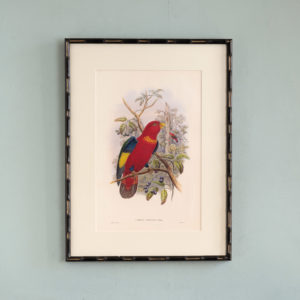
Birds of New Guinea by John Gould,
Birds of New Guinea by John Gould,
John Gould (1804-1881) was born in Lyme Regis, Dorset, the son of John Gould, a gardener, and his wife Elizabeth Clatworthy. Gould’s training was as a taxidermist rather than an artist, and in 1828 he was appointed animal preserver at the museum of the Zoological Society of London. In 1838-1840, Gould and his family went to the then relatively unknown continent of Australia, with the purpose of collecting and studying specimens. During his time there he discovered hundreds of new bird species and subspecies. As a result of the findings the fascinating works Birds of Australia and Mammals of Australia were published. Subsequently he was considered as the father of bird study in Australia. Gould himself did not execute finished drawings for any of his works, only providing rough pencil or watercolour sketches with notes for his artists to work from. The artists he employed included his wife Elizabeth, Edward Lear, Joseph Wolf, Henry Richter and Joseph Hart. -
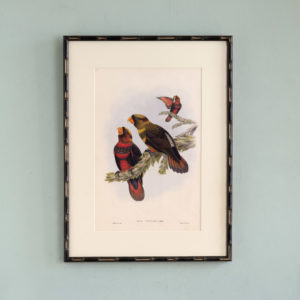
Birds of New Guinea by John Gould,
Birds of New Guinea by John Gould,
John Gould (1804-1881) was born in Lyme Regis, Dorset, the son of John Gould, a gardener, and his wife Elizabeth Clatworthy. Gould’s training was as a taxidermist rather than an artist, and in 1828 he was appointed animal preserver at the museum of the Zoological Society of London. In 1838-1840, Gould and his family went to the then relatively unknown continent of Australia, with the purpose of collecting and studying specimens. During his time there he discovered hundreds of new bird species and subspecies. As a result of the findings the fascinating works Birds of Australia and Mammals of Australia were published. Subsequently he was considered as the father of bird study in Australia. Gould himself did not execute finished drawings for any of his works, only providing rough pencil or watercolour sketches with notes for his artists to work from. The artists he employed included his wife Elizabeth, Edward Lear, Joseph Wolf, Henry Richter and Joseph Hart. -

Victorian Derbyshire fossil limestone fireplace,
-
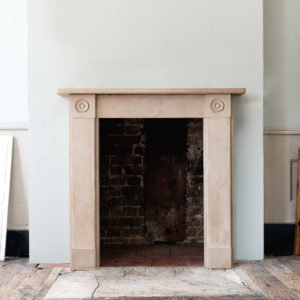
Regency Portland stone bedroom fireplace,
Regency Portland stone bedroom fireplace,
of elegant understated form, with convex roundel corner-blocks. Original iron insert available if required (not photographed). -
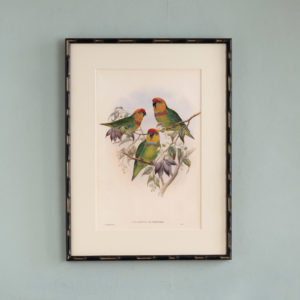
Birds of New Guinea by John Gould,
Birds of New Guinea by John Gould,
John Gould (1804-1881) was born in Lyme Regis, Dorset, the son of John Gould, a gardener, and his wife Elizabeth Clatworthy. Gould’s training was as a taxidermist rather than an artist, and in 1828 he was appointed animal preserver at the museum of the Zoological Society of London. In 1838-1840, Gould and his family went to the then relatively unknown continent of Australia, with the purpose of collecting and studying specimens. During his time there he discovered hundreds of new bird species and subspecies. As a result of the findings the fascinating works Birds of Australia and Mammals of Australia were published. Subsequently he was considered as the father of bird study in Australia. Gould himself did not execute finished drawings for any of his works, only providing rough pencil or watercolour sketches with notes for his artists to work from. The artists he employed included his wife Elizabeth, Edward Lear, Joseph Wolf, Henry Richter and Joseph Hart. -
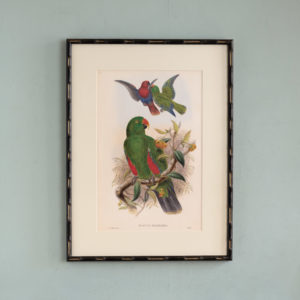
Birds of New Guinea by John Gould,
Birds of New Guinea by John Gould,
John Gould (1804-1881) was born in Lyme Regis, Dorset, the son of John Gould, a gardener, and his wife Elizabeth Clatworthy. Gould’s training was as a taxidermist rather than an artist, and in 1828 he was appointed animal preserver at the museum of the Zoological Society of London. In 1838-1840, Gould and his family went to the then relatively unknown continent of Australia, with the purpose of collecting and studying specimens. During his time there he discovered hundreds of new bird species and subspecies. As a result of the findings the fascinating works Birds of Australia and Mammals of Australia were published. Subsequently he was considered as the father of bird study in Australia. Gould himself did not execute finished drawings for any of his works, only providing rough pencil or watercolour sketches with notes for his artists to work from. The artists he employed included his wife Elizabeth, Edward Lear, Joseph Wolf, Henry Richter and Joseph Hart. -
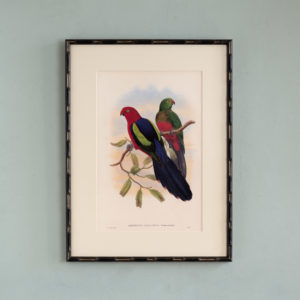
Birds of New Guinea by John Gould,
Birds of New Guinea by John Gould,
John Gould (1804-1881) was born in Lyme Regis, Dorset, the son of John Gould, a gardener, and his wife Elizabeth Clatworthy. Gould’s training was as a taxidermist rather than an artist, and in 1828 he was appointed animal preserver at the museum of the Zoological Society of London. In 1838-1840, Gould and his family went to the then relatively unknown continent of Australia, with the purpose of collecting and studying specimens. During his time there he discovered hundreds of new bird species and subspecies. As a result of the findings the fascinating works Birds of Australia and Mammals of Australia were published. Subsequently he was considered as the father of bird study in Australia. Gould himself did not execute finished drawings for any of his works, only providing rough pencil or watercolour sketches with notes for his artists to work from. The artists he employed included his wife Elizabeth, Edward Lear, Joseph Wolf, Henry Richter and Joseph Hart. -
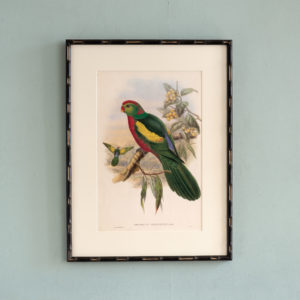
Birds of New Guinea by John Gould
Birds of New Guinea by John Gould
John Gould (1804-1881) was born in Lyme Regis, Dorset, the son of John Gould, a gardener, and his wife Elizabeth Clatworthy. Gould’s training was as a taxidermist rather than an artist, and in 1828 he was appointed animal preserver at the museum of the Zoological Society of London. In 1838-1840, Gould and his family went to the then relatively unknown continent of Australia, with the purpose of collecting and studying specimens. During his time there he discovered hundreds of new bird species and subspecies. As a result of the findings the fascinating works Birds of Australia and Mammals of Australia were published. Subsequently he was considered as the father of bird study in Australia. Gould himself did not execute finished drawings for any of his works, only providing rough pencil or watercolour sketches with notes for his artists to work from. The artists he employed included his wife Elizabeth, Edward Lear, Joseph Wolf, Henry Richter and Joseph Hart. -
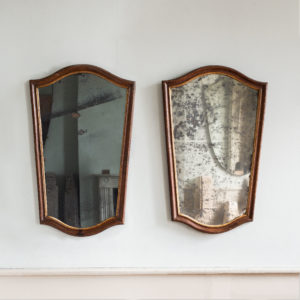
Pair of eighteenth century Italian wall mirrors,
Pair of eighteenth century Italian wall mirrors,
Walnut, with gilding to the interior moulding surrounding the attractively foxed mercury mirror plates. -
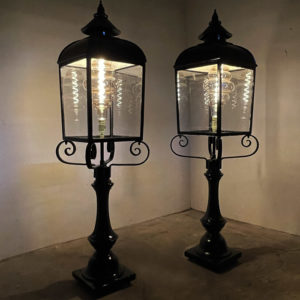
A pair of English cast iron and tole peint post-mounted pier-top lanterns
A pair of English cast iron and tole peint post-mounted pier-top lanterns
each rectangular lantern with a convex sheet steel top and pointed finial, raised on a wrought-iron scrolled chair-iron and baluster-shaped post, with a square foot, -
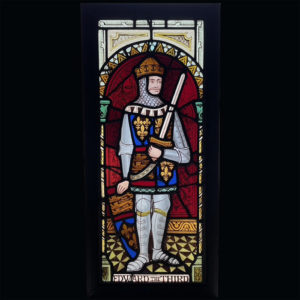
An English stained glass panel depicting Edward III
An English stained glass panel depicting Edward III
the rectangular leaded polychrome glass pane, naively painted with the standing Plantagenate king in full armour and bearing a sword,
